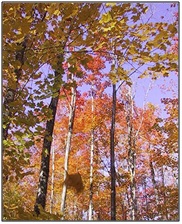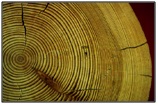Forestry
Forestry and NPS Pollution

Massachusetts has a total area of 5 million acres, of which 3.2 million acres (64%) is forested. Forestry includes the management of forested areas for the purpose of planting and harvesting trees for timber and other associated wood products. Forestry activities that may contribute to nonpoint source pollution if BMPs are not used include:
- Harvesting: Activities associated with cutting and removing timber can cause increased soil erosion. Access and skid roads, stream crossings, and log landings are the primary sources. Increased erosion can result in suspended or bed load sediments in streams, ponds, reservoirs, and lakes. Clear-cutting or patch-cutting large areas may result in hydrologic modifications that could cause accelerated channel or sheet erosion.
- Reforestation: Site preparation may result in the temporary loss of cover and result in sheet and rill erosion. Use of herbicides to suppress existing vegetation may result in water contamination.
- Christmas Tree Plantations: Site preparation and annual weed control with herbicides may result in accelerated sheet and rill erosion and water contamination.
- Harvesting Equipment: Spills and leakage of stored fuels or power equipment may result in water contamination.
- Chemical Application: If improperly applied, fertilizers, herbicides, and pesticides used for forest management can be transported in stormwater runoff and pollute water bodies.
Many small-scale forest activities, including limited land clearing and tree removal, are not regulated and do not require the filing of a forest cutting plan (for permitting thresholds, see description of Forest Cutting Practices Act below). The BMPs presented in this section are suggested for use when trees are removed, roads constructed and land cleared. Sediment is the primary NPS pollution concern related to forestry activities. The operation of heavy equipment to build access roads or remove forest products can disturb soil, which allows precipitation and runoff to dislodge soil particles and create sediment. This sediment-laden runoff is NPS pollution if it gets into rivers, streams, lakes, ponds, or wetlands. Forestry operations can also generate chemical NPS pollution from the storage, operation and maintenance of mechanical equipment; as well as through the application of fertilizers and pesticides.
The Massachusetts Department of Conservation and Recreation (DCR),
Bureau of Forestry provides planning and implementation of natural resource management activities on the State’s forest and parks system comprising 310,000 acres. In addition, Massachusetts’s municipalities manage watershed lands that cover over 245,000 acres - many of which practice active forest management. Professional foresters from the Bureau of Forestry-Service Forestry Program provide technical assistance to landowners wishing to manage their forests. The Service Forestry Program promotes long-term forest management and resource protection on public and private lands through a combination of statutory mandates, tax relief, and outreach and education programs. More information on Bureau of Forestry programs can be found at:
http://www.mass.gov/eea/agencies/dcr/conservation/forestry-and-fire-control/forestry.html
Regulations
The Forest Cutting Practices Act (Massachusetts General Laws (MGL) Chapter 132, Section 40-46) and Massachusetts Wetlands Protection Act (MGL Chapter 131) require BMPs to control NPS pollution from forest harvesting operations.
- Forest Cutting Practices Act: Whenever more than 50 cords of wood or 25 thousand board feet of timber will be harvested for commercial use from any parcel within a relatively uninterrupted period, the landowner or his/her agent must file a Forest Cutting Plan with DCR that includes:
- Information on the cutting methods to be used;
- How the forest will be regenerated;
- How erosion will be controlled on roads;
- How wetlands and steep slopes will be protected on roads; and
- How rare species habitat (if present) may be protected.
No harvesting can be done before the plan is approved and a Forest Cutting Permit is issued by DCR. Some non-commercial harvesting for personal use of the landowner may be exempt from the law, but landowners may voluntarily file when wetlands are involved, to qualify for the exemption from wetlands procedures.
- Wetlands Protection Act: BMPs are required in order to meet the conditions for a permitting exemption from the Massachusetts Wetlands Protection Act (WPA). All forest harvesting activities that take place within 100 feet of a wetland resource area must receive either an exemption or a permit under the WPA. A properly filed, approved, and followed Forest Cutting Plan provides an exemption to the normal filing requirements of the Wetlands Protection Act.

Best Management Practices for Forestry
There are several types of forestry activities associated with NPS pollution: road construction and their use; timber harvesting; equipment storage, handling and maintenance; regeneration methods; site preparation; prescribed burning and application of pesticides (USEPA, 1993).
The BMP fact sheets listed below describe practices required or recommended by the Bureau of Forestry to minimize the impacts from forestry operations on water quality. In addition to these BMPs, many of BMPs described in the
Erosion and Sediment Control section of the Clean Water Toolkit are also relevant to forestry management.
Fact Sheet Links
Click the links below for information on BMPs from the Massachusetts Forestry Best Management Practices Manual.